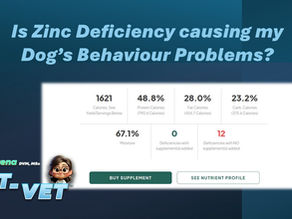Training and Behaviour
Welcome to the Training and Behaviour Page!
During my first Bachelor of Science degree, I minored in Psychology, where I studied classical conditioning, operant learning, and positive reinforcement, the foundations of how animals (and humans) learn.
I later applied this knowledge as a zookeeper, working with large carnivores like tigers and cougars. You can’t force a big cat to do something it doesn’t want to do. Instead, training relied on reducing fear and anxiety, habituating animals to human presence, and using motivation, like food rewards, to encourage voluntary shifting. By ensuring they felt safe, secure, and free from aversive experiences, the process became calm, predictable, and effective.
Now, I use this expertise to help pet owners train their animals to cohabitate successfully in the human world. If you're struggling with a particular behaviour, you're not alone! Early intervention is key; your veterinarian should be aware of any concerns as soon as they arise. Ideally, they’ll also recognize early behavioural signs in puppies and kittens, as we know the critical socialization period has a lasting impact on how they develop into adolescents and adults.
Most recently, I’ve begun a non-traditional residency in veterinary behaviour, which includes:
-
Managing behaviour cases
-
Studying learning theory, animal welfare, ethology, statistics, and psychopharmacology
-
Writing Case Reports and Performing Research
If you have questions about training, feel free to drop me a line!









